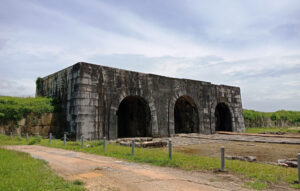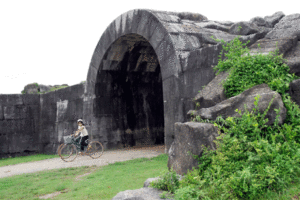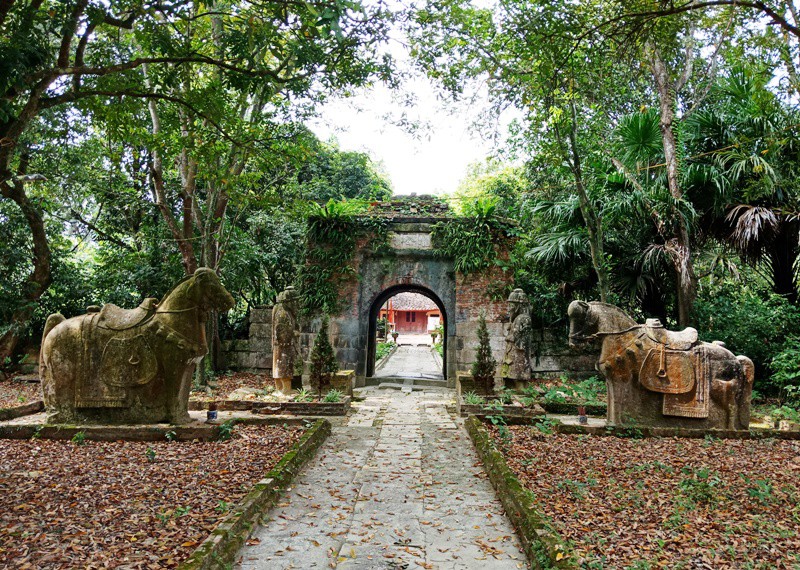The Ho Dynasty Citadel was recognized by Unesco as a world cultural heritage in 2011.
The Ho Dynasty Citadel is located in Vinh Loc district, Thanh Hoa province, and was the capital of Vietnam from 1398 to 1407.
The Ho Dynasty Citadel was built by Ho Quy Ly in 1397 when he was still prime minister during the Tran dynasty.

This is a magnificent project because of its engineering, the art of large stone construction, and the combination of unique construction traditions. The Ho Dynasty citadel is very well preserved. This is one of the capital’s relics that has not been affected much by the urbanization process. The landscape and architectural scale are preserved almost intact both on the ground and underground. The Ho Dynasty citadel, in addition to the Noi Citadel, Hao Thanh, and La Thanh, also had the Nam Giao Altar.

The inner citadel was built in an almost square shape, with a circumference of 3,508 meters and an area of 142.2 hectares. The south-north wall is 870.5 m long; The east-west direction is 883.5 m long. The inner citadel has 4 gates opened in the middle of the 4 city walls. The entire walls of the four main gates are built of square, finely chiseled green stone slabs, stacked tightly on top of each other.
The stone slabs have an average length of 1.5 m, are thick, and weigh about 15 – 20 tons. The inner citadel has architectural works such as: Hoang Nguyen Palace, Nhan Tho Palace, Phu Cuc Palace, Eastern Palace, Eastern Thai Mieu, Western Thai Mieu,…

Currently, only a few relics and relics remain in the inner citadel such as: The city wall with 4 city gates, traces of lakes, a pair of dragon steps made of stone with very sophisticated sculptures, the foundation of the inner citadel’s architecture, Hoa Nhai stone road, marbles, stone bullets, ceramics, south gate campus and valuable artifacts typical of the culture of the Ho Dynasty.
The citadel moat has 4 stone bridges leading to the 4 gates of the inner citadel. Today, traces of Hao Thanh can still be clearly seen in the north, east, and southern half of the citadel. La Thanh was the outermost citadel of the Ho Dynasty Citadel, built to shield the inner citadel, and was the living place of the citadel’s residents. La Thanh citadel is about 10 km long, built in a natural shape.
The Nam Giao Altar is an important architectural work, built in 1402 in the southwest of Don Son mountain. The Nam Giao altar is a place to worship the heavens, praying for good weather and peace, peace for the country and people, and a long and prosperous dynasty. In addition, the Nam Giao Altar is also the place to worship the souls of Emperors, stars, and many other Gods.
